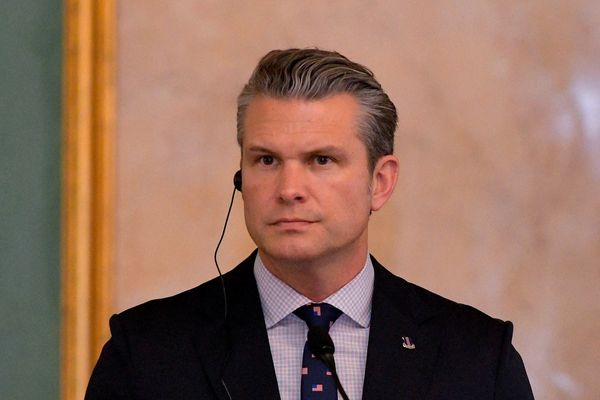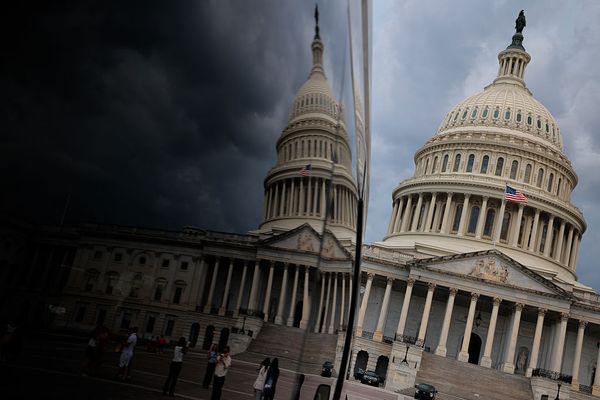
The governor of the Reserve Bank, Michele Bullock, was at pains on Tuesday afternoon to not give any guidance on what might happen with interest rates. But it did not take a lot of reading between the lines to discern that she thinks the economy is doing well enough that the RBA could pack up its kit bag and go home.
Bullock did not rule out another rate cut, but unlike previous months, she didn’t even seem to wish to talk about whether or not the RBA monetary policy board had an “easing bias” – where the members think a rate cut in the future is more likely than not.
So, while the possibility of a rate cut on Melbourne Cup Day (oddly only five weeks away, not the usual six-week gap in between meetings) remains, you might have better luck betting on any old nag in the race than on the likelihood of the cash rate going to 3.35%.
If the graph does not display click here
The key giveaway that the RBA seems unlikely to do another rate cut was when, in Bullocks’s press conference on Tuesday, she suggested that the current rate of 3.6% was not “very restrictive”.
A restrictive interest rate is one that slows the economy – or to put it bluntly, that causes unemployment to rise. In essence, a restrictive rate is one where households are unable to spend as much as they normally would in the shops and on services, and as a result employment growth falls and unemployment rises.
Bullock said: “I think we feel that it’s still probably a little bit restrictive policy. We certainly don’t think it’s very restrictive … so all we’ve got to go on, because we don’t know what sort of neutral is, is observing inflation, employment and what is happening to the economy.”
OK then, what do we observe with inflation?
Bullock suggested on Tuesday that while the RBA does not completely dismiss the monthly CPI numbers, it cares most about the quarterly trimmed mean – which tops and tails the biggest rises and falls to give an underlying sense of what is happening to inflation.
Using that (and the monthly figure for some extra context), we see inflation firmly within the 2% to 3% target range.
If the graph does not display click here
Bullock likes to say the RBA aims for 2.5%, but if we are honest that is aiming for a level of precision that is not possible. Given Bullock admits she does not know how restrictive the main policy lever at her disposal is, suggesting the RBA can hit 2.5% inflation on purpose sounds just like marketing spin.
What, then, do we observe happening with employment?
The most recent August figures show that total employment growth over the previous year was 1.5%, down from 1.8% in July and 1.9% in June. It is slowing quickly, and at 1.5% it is below the average growth rate of 1.7% we had between 2010 and 2019.
If the graph does not display click here
Full-time employment is growing at just 1.3% – again, slower than the 2010s average of 1.4%. Even part-time employment is growing slower than the 2010s average.
The 2010s was not a period of strong economic growth; indeed, it was so poor the RBA cut interest rates 15 times from 4.75% to 0.75% to get employment growing. For most of that time (from June 2012 onwards), the cash rate was below the current level of 3.6%.
If the graph does not display click here
But don’t worry, the current rate – according to the RBA – is apparently not slowing the economy all that much.
What, then, is happening in the economy?
The latest GDP figures had growth at 1.8% – just a smidge over half the long-term average of 3.1%, and again lower than the 2010s average of 2.6%:
If the graph does not display click here
Bullock suggested the June figures showed the private sector was again contributing more to the economic growth than the public sector. She provided this as a reason for not cutting rates – rather than as a sign of just how weak the overall economy has been – because the private sector should always be contributing more to economy growth!
If the graph does not display click here
The times when the public sector contributed more than the private sector to economic growth were times when things were not going well at all, such as 2015-16 and 2019 – periods when the RBA cut rates to get the economy moving.
And why do we want the economy moving? Because GDP growth is strongly linked to unemployment. Over the past 30 years, GDP growth of about 2.75% has been needed to prevent unemployment from rising:
If the graph does not display click here
It is worth noting that in its August statement on monetary policy, the RBA predicted GDP growth out to the end of 2027 never rising above 2.1%.
But apparently, that’s all good, no need to cut rates; no need to stimulate the economy; no need to worry about rising unemployment.
The RBA is betting the economy is better than the data says, and it has laid the bet on behalf of all of us.
• Greg Jericho is a Guardian columnist and policy director at the Centre for Future Work







